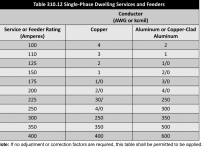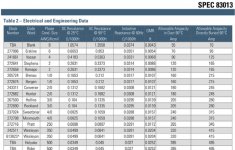andy32821
Member
- Location
- Orlando, Fl
- Occupation
- Automation
Hi,
I'm in Orange County Fl. I wish to upgrade my main panel (outside next to the meter) from a 125 amp to a 175-amp service.
The service entrance cable from the transformer to the meter is 1/0 aluminum direct burial cable (60-foot transformer to meter).
The power company's lineman that verified the size tells me that should be fine for a 200-amp service.
(I have an EC license (inactive) but I'm an automation guy and not familiar with all the codes involved.)
Trying to calculate from the code it seems like I will be limited to somewhat less than a 200-amp service.
When I hire an electrical contractor to do an upgrade. what is the maximum service the EC's engineer is going to allow on this existing 1/0 alum cable?
(Power company has approved a 200-amp service as far as the load on the transformer)
Andy
I'm in Orange County Fl. I wish to upgrade my main panel (outside next to the meter) from a 125 amp to a 175-amp service.
The service entrance cable from the transformer to the meter is 1/0 aluminum direct burial cable (60-foot transformer to meter).
The power company's lineman that verified the size tells me that should be fine for a 200-amp service.
(I have an EC license (inactive) but I'm an automation guy and not familiar with all the codes involved.)
Trying to calculate from the code it seems like I will be limited to somewhat less than a 200-amp service.
When I hire an electrical contractor to do an upgrade. what is the maximum service the EC's engineer is going to allow on this existing 1/0 alum cable?
(Power company has approved a 200-amp service as far as the load on the transformer)
Andy



